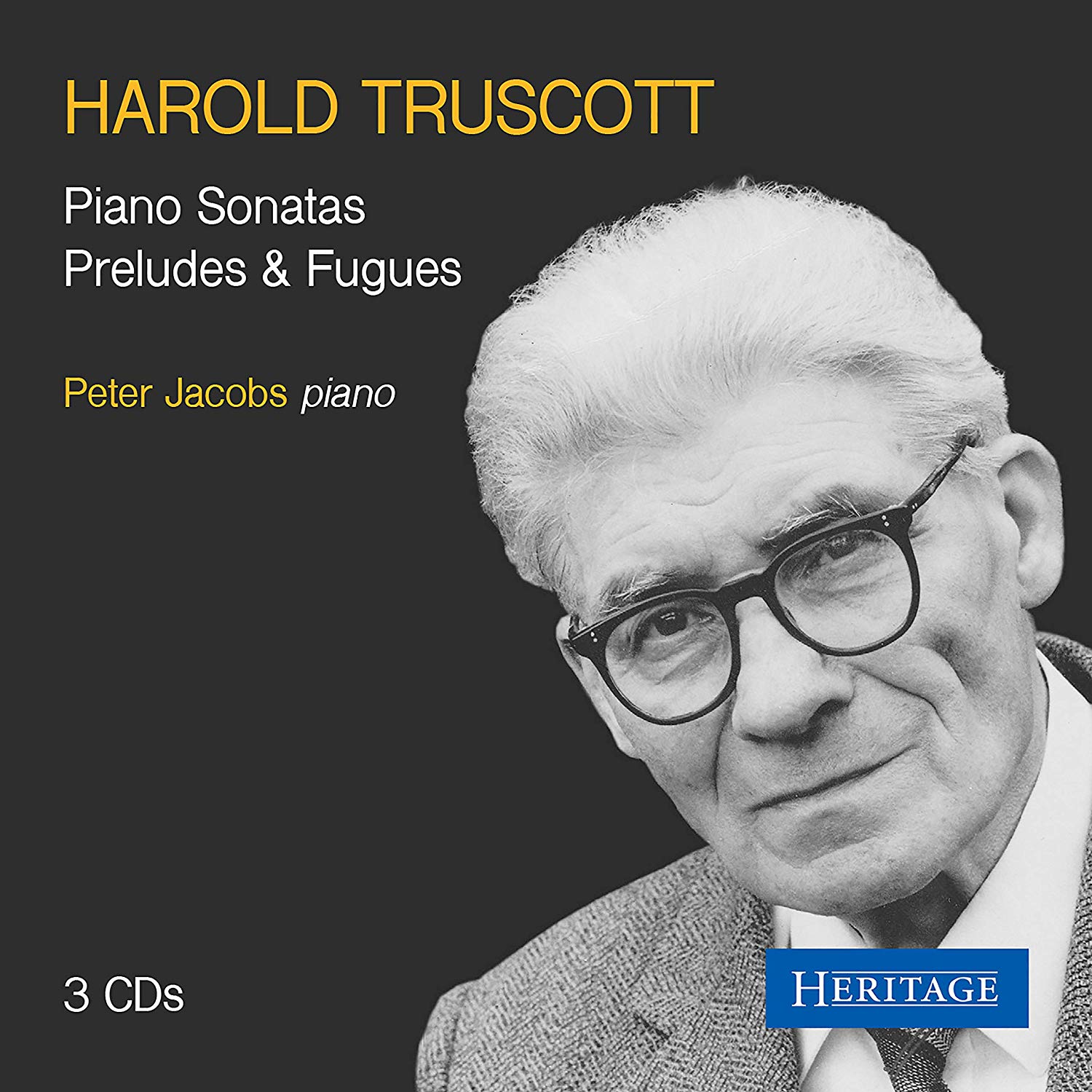TRUSCOTT Piano Sonatas (Peter Jacobs)
View record and artist detailsRecord and Artist Details
Genre:
Instrumental
Label: Heritage Recordings
Magazine Review Date: 02/2020
Media Format: CD or Download
Media Runtime: 177
Mastering:
DDD
Catalogue Number: HTGCD304

Tracks:
| Composition | Artist Credit |
|---|---|
| Piano Sonata No. 3 |
Harold Truscott, Composer
Peter Jacobs, Piano |
| Piano Sonata No. 5 |
Harold Truscott, Composer
Peter Jacobs, Piano |
| Piano Sonata No. 7 |
Harold Truscott, Composer
Peter Jacobs, Piano |
| Piano Sonata No. 6 |
Harold Truscott, Composer
Peter Jacobs, Piano |
| Piano Sonata No. 9 |
Harold Truscott, Composer
Peter Jacobs, Piano |
| Piano Sonata No. 11 |
Harold Truscott, Composer
Peter Jacobs, Piano |
| Piano Sonata No. 12 |
Harold Truscott, Composer
Peter Jacobs, Piano |
| Piano Sonata No. 13 |
Harold Truscott, Composer
Peter Jacobs, Piano |
| Piano Sonata No. 15 |
Harold Truscott, Composer
Peter Jacobs, Piano |
| Piano Sonata No. 17 |
Harold Truscott, Composer
Peter Jacobs, Piano |
| Preludes and Fugues, Movement: No. 1 in E-Flat Minor, RC 70 |
Harold Truscott, Composer
Peter Jacobs, Piano |
| Preludes and Fugues, Movement: No. 2 in C Major, RC 71 |
Harold Truscott, Composer
Peter Jacobs, Piano |
Author: Richard Whitehouse
Harold Truscott (1914 92) is a telling example of a composer little appreciated in his lifetime and barely more so now: to the extent that these three Altarus LPs (and one British Music Society tape) were the first recordings of his music, have had few successors and are only now being reissued. Yet Truscott had an innate understanding of the piano, his 17 sonatas (preceded by three surviving such works with an unfinished 18th) at the core of an output drawing directly while never slavishly on the Austro-German Classical style in which he was early immersed.
The 10 sonatas here provide a valuable overview. The Third Sonata (1948) is a fine instance of Truscott’s earlier lyricism and (in its outer movements) fine-honed rhetoric, with the Fifth (1955) an ‘in memoriam’ to Medtner that captures the essence of his idiom without imitation. The Sixth (1956) leavens melodic expansiveness with a heady cumulative momentum, while the Ninth (1960) is the most exacting in its pianistic brilliance. The compact one-movement Seventh (1956) most clearly points the way forwards by making possible the quixotic duality of the Eleventh (1964), the playful concision of the Twelfth and the tensile force of the Thirteenth (both 1967). The Fifteenth (1981) is a sonatina in size if not in scope, with the Seventeenth (1982) a marvel of motivic ingenuity and formal compression but not in the least aphoristic.
Peter Jacobs plays throughout with the linear clarity and judicious phrasing needed. Sound is clear if just occasionally confined, and Guy Rickards astutely dovetails his observations with extracts from Truscott’s own commentaries. Well worth reissuing, and well worth acquiring.
Discover the world's largest classical music catalogue with Presto Music.

Gramophone Digital Club
- Digital Edition
- Digital Archive
- Reviews Database
- Full website access
From £8.75 / month
Subscribe
Gramophone Full Club
- Print Edition
- Digital Edition
- Digital Archive
- Reviews Database
- Full website access
From £11.00 / month
Subscribe
If you are a library, university or other organisation that would be interested in an institutional subscription to Gramophone please click here for further information.




